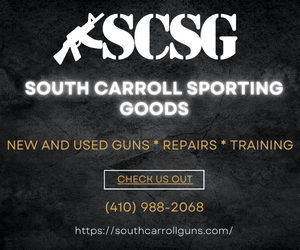Squaregrouper
Kragaphile
Clarifying the post above...It's a slightly different process, but not terribly. The main thing is that it requires a case trimmer.
To give you an example, this is how I load pistol and rifle:
Pistol:
1. Tumble brass, get them shiny.
2. Station 1 of Dillon 550 - Size/decap/prime
3. Station 2 of Dillon 550 - drop power, flare case mouth
4. Station 3 of Dillon 550 - seat bullet
5 Station 4 of Dillon 550 - crimp bullet
(note - steps are the same on a single stage press with the exception that priming and powder charging can be done off the press, although some people don't - it's possible to prime on the press, and some people have a powder measure set up on a single stage press.)
Rifle: (specifically 223)
1. Tumble brass, get them clean.
2. lubricate, (I use Dillon lanolin case lube) then Station 1 of 550 - Size/decap
3. Trim - I use a Lyman Universal case trimmer with power-pack combo. I don't think I ordered that, but it's what I have and I can use a cordless drill to power the trimming head, which makes it faster)
4. De-burr - I mentioned somewhere above that chuck my deburring tools into a corded drill and mount that in a vise locked in the "on" position - it goes faster that way. At some point I'll buy a case prep station.
5. Cut out primer pockets - I do this with the inner chamfer deburring tool in the drill
That's all part of the brass prep - once I've trimmed the brass, it really won't need to be trimmed again - it won't stretch enough to warrant it and it will wear out before it needs to be trimmed again. That eliminates steps 2-5 if I know that I've already prepped the brass. If I have, then it's just like loading for pistol - I
Once brass prep is done, I move to the Dillon and run it as a progressive:
6. Station 1 of 550 - lubricate/size (although it has already been sized) and prime
7. Station 2 of 550 - powder charge
8. Station 3 of 550 - seat bullet - on most rifle loading, this is the end of the process.
9. Station 4 of 550 - crimp with Lee Factory Crimp die, very lightly for AR.
People will argue that step 9 is unnecessary, and for any other ammo I'd agree, but most of my 223 loading is to feed my ARs. It could also be argued that I don't need to do step 6, and that argument would be valid, but since I'm doing it on my Dillon 550, I don't see any harm in running the brass up into the sizing die a second time.
It's all pretty straightforward.
New to you 5.56 brass requires quite a bit of work. Once the crimps are removed and the brass has been chamfered, the only significant difference between that and pistol brass is trimming and re-chamfering every 2-4 firings.





